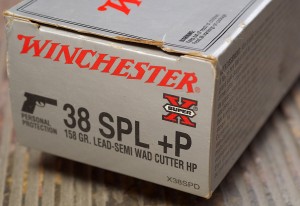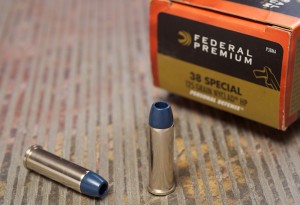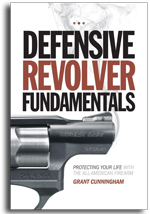By Grant Cunningham, Gun Digest
The idea behind the +P is to add enough energy to reliably deliver an expanded bullet deep enough to do its job. It doesn’t have to be a lot of extra energy – it just has to be enough. Here’s what you need to know.
What About +P Ammo?
Remember that hollowpoints use part of their energy to expand their diameter, but the energy that’s used to expand the bullet is energy that can’t be used to drive the same bullet forward. There is no such thing as a free lunch; if you want the bullet to expand, it’s going to use energy. If there is too little of it to start with, there won’t be enough left to carry the bullet on its path.

In .38 Special, the best loads are all of the +P variety.
In those cases the expanded bullet will stop forward movement too soon, which results in very shallow wounds that don’t reach vital organs. This is why you don’t find a lot of expanding bullets in standard .38 Special cartridges – there just isn’t enough energy to drive a bullet deeply into the target and expand it at the same time.
The answer is to start out with more energy, enough to both expand the bullet and penetrate sufficiently. This is often accomplished with “+P” ammunition, which is simply a cartridge which has been loaded beyond what is considered “normal” pressure. The +P loading boosts the energy of the cartridge to accomplish a specific task.
A common misunderstanding of +P loadings is that they’re useless since they’re not a huge increase in power. Here’s the thing: they don’t have to be.
The idea behind the +P is to add enough energy to reliably deliver an expanded bullet deep enough to do its job. It doesn’t have to be a lot of extra energy – it just has to be enough. If a normal-pressure load can’t quite deliver that bullet to where it needs to, but a little hotter +P version does, then that is sufficient for the task at hand.
It’s important to understand that you don’t need vast increases in power for defensive applications; you simply need enough power to perform both of the tasks we discussed earlier. Some will argue that it’s better to have a larger reserve amount of energy on tap than a +P, but everything comes at a price.
Ammunition for the Recoil Sensitive

Federal Nyclad is the only standard pressure .38 Special round author feels comfortable recommending for self-defense work.
Many people, particularly those with the ultra-light revolvers, find that the recoil of .38 Special +P ammunition is too much to comfortably handle. Sadly, there aren’t a lot of alternatives; the .38 Special, in standard-velocity loadings, isn’t well known as a fight-ending cartridge.
There is an exception, but unfortunately it’s a little hard to find: the Federal Nyclad 125 grain hollowpoint.
This load combines a very soft lead bullet with a nylon jacket, which allows it to travel down a barrel without leaving a lot of lead behind. The soft lead expands readily even at .38 Special velocities, but still has a decent amount of penetration.
The load has been around for many years and there is a small but reliable number of defensive shootings where it has been used to good (though not spectacular) effect.
It would not be my first choice except for those cases where +P ammunition is contra-indicated.
This article is an excerpt from the new book Defensive Revolver Fundamentals by Grant Cunningham. Click here to get your copy.













